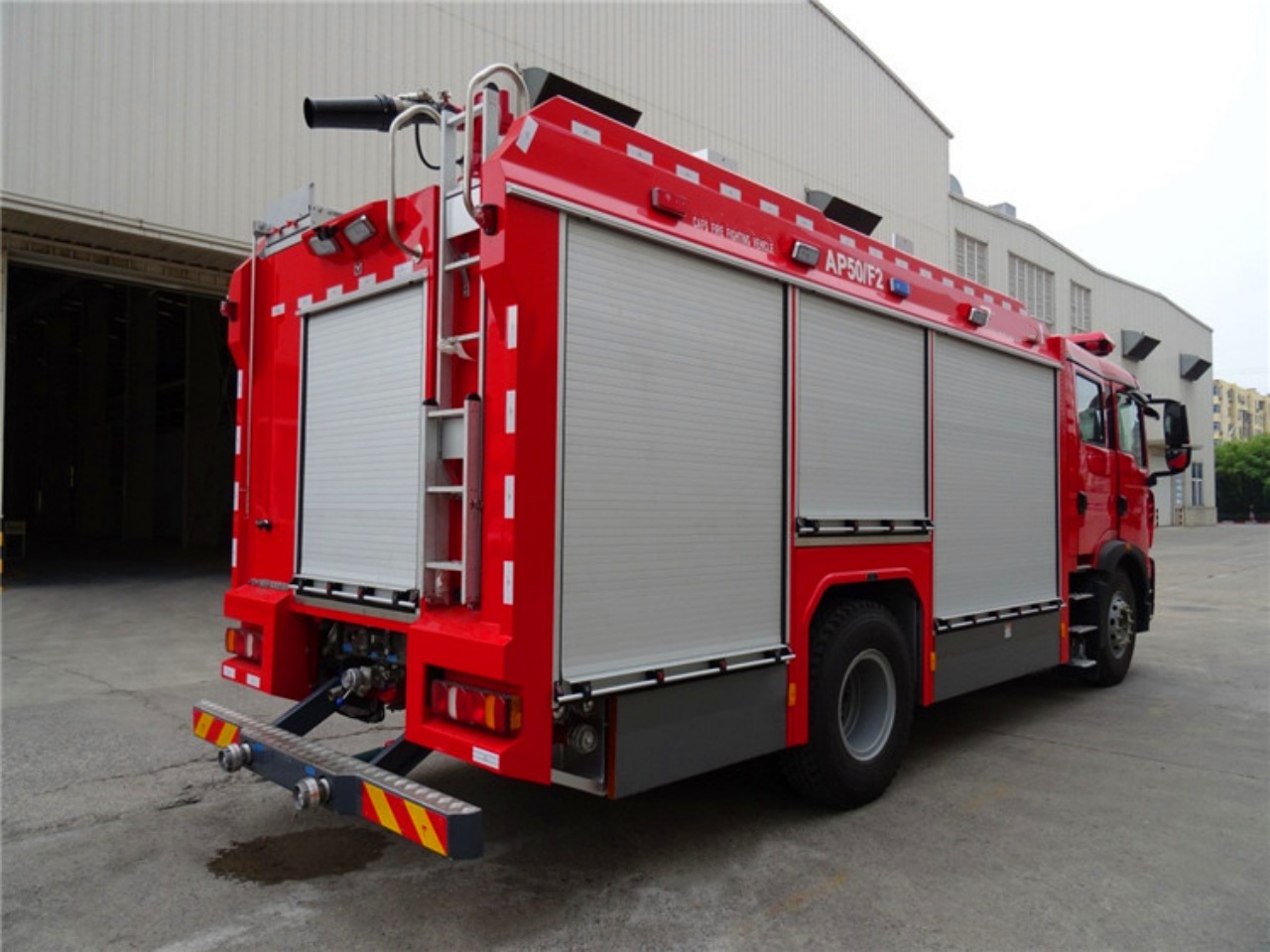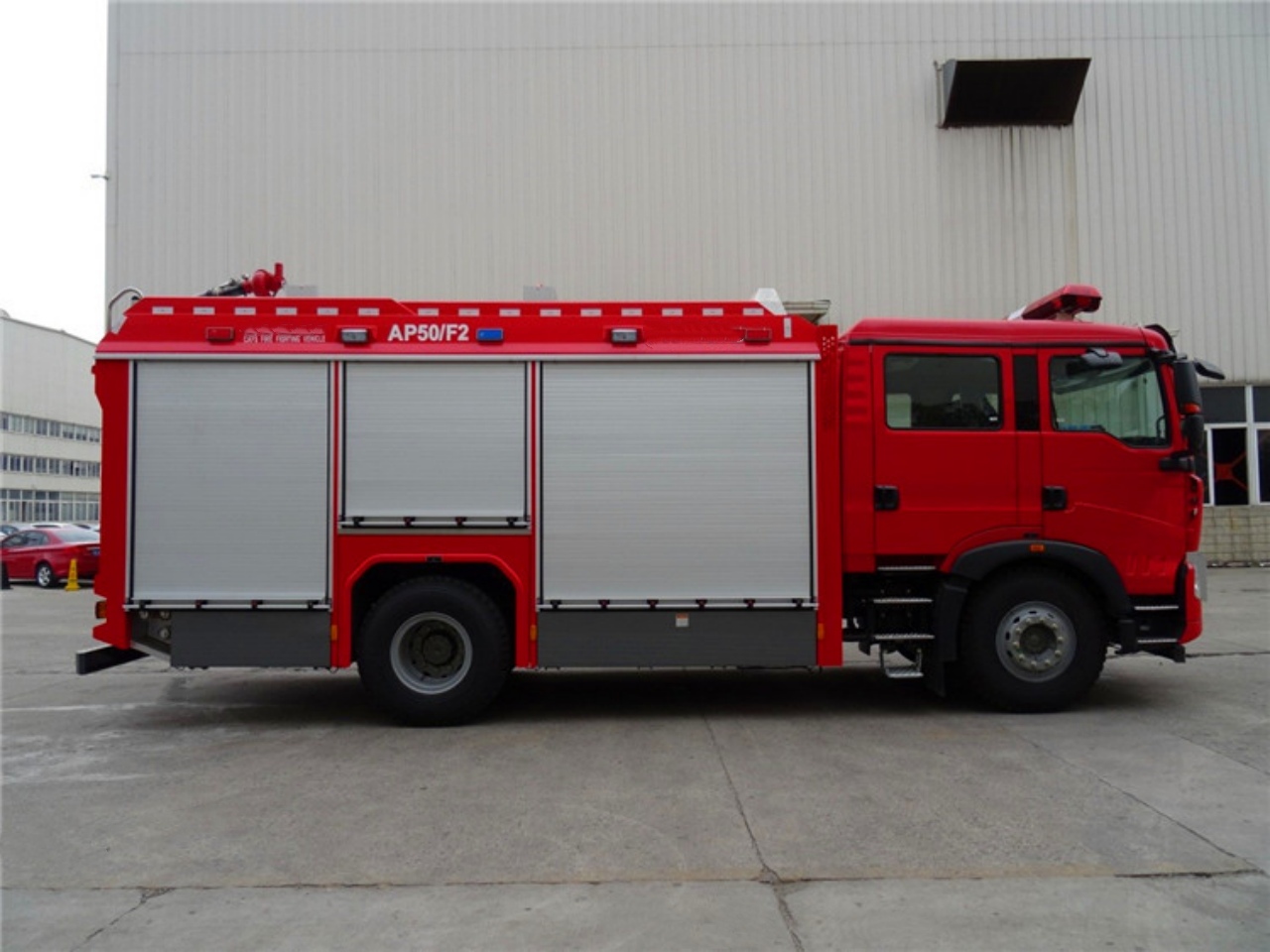When discussing firefighting and fire suppression technologies, 2 terms frequently arise: Compressed Air Foam Systems (CAFS) and foam. While they are related and often used together, they are not the same thing. Understanding the differences between CAFS and foam is essential for firefighters, emergency response teams, and industries where fire suppression is a priority. This article explores the distinctions, advantages, and applications of each.
Understanding Foam in Firefighting
What is Foam?
Firefighting foam is a substance that suppresses fire by creating a barrier between the fuel and the oxygen required for combustion. It is composed of three primary elements:
- Foam concentrate – A specially formulated chemical mixture that helps create foam.
- Water – Acts as a carrier and contributes to the cooling effect.
- Air – Essential for the expansion of foam and its effectiveness in fire suppression.
Types of Firefighting Foam
There are several types of firefighting foam, each designed for different fire scenarios:
- Class A Foam – Used for ordinary combustibles such as wood, paper, and vegetation. It enhances water penetration and cooling.
- Class B Foam – Designed for flammable liquid fires, such as gasoline and oil. It forms a film to suppress vapors and cools the fuel.
- Alcohol-Resistant Aqueous Film-Forming Foam (AR-AFFF) – Suitable for fires involving alcohol-based fuels that degrade conventional foams.
- High-Expansion Foam – Used in confined spaces, such as tunnels or aircraft hangars, to quickly fill large areas.
Foam is typically applied through standard firefighting equipment, including proportioning systems, nozzles, and specialized foam monitors.

Understanding Compressed Air Foam Systems (CAFS)
What is CAFS?
CAFS is a system that enhances the application of firefighting foam by introducing compressed air into the foam-water mixture. Unlike conventional foam systems that rely on atmospheric aeration, CAFS uses a mechanical compressor to inject air into the solution, producing a more consistent and efficient foam structure.
Components of a CAFS
A CAFS consists of the following main components:
- Foam Concentrate Tank – Stores the foam concentrate.
- Water Supply – Provides the necessary liquid component.
- Proportioning System – Mixes the foam concentrate with water at the correct ratio.
- Compressed Air Source – A dedicated air compressor that injects air into the foam solution.
- Discharge System (Hoses and Nozzles) – Used to deliver the finished foam to the fire scene.
Characteristics of CAFS Foam
- Denser and more stable foam – The mechanically introduced air creates a more uniform and controlled foam structure.
- Greater adhesion – CAFS foam sticks to vertical and overhead surfaces better, making it effective in structure fires.
- Better water efficiency – Reduces the overall amount of water needed to fight a fire, minimizing water damage.

Key Differences Between CAFS and Foam
| Feature | Foam | CAFS |
|---|---|---|
| Definition | A fire suppression agent made from foam concentrate, water, and air. | A system that enhances foam application by adding compressed air. |
| Foam Generation | Foam is formed by atmospheric aeration through nozzles or proportions. | Foam is mechanically aerated using a dedicated air compressor. |
| Consistency | Can vary depending on the method of application. | Produces a uniform and stable foam structure. |
| Water Usage | Requires a higher volume of water. | Uses significantly less water, reducing runoff and water damage. |
| Fire Suppression Effectiveness | Effective in creating a fire barrier and cooling the fuel. | More efficient in penetration, adhesion, and suppression due to better expansion and density. |
| Equipment | Standard foam proportioners and discharge nozzles. | Requires a dedicated air compressor and specialized delivery system. |
| Cost | Lower initial investment but may require more foam concentrate. | Higher initial investment but reduces long-term operational costs. |
Advantages and Disadvantages of CAFS and Foam
Advantages of Foam
- Effective for various fire classes (A and B).
- Easy to deploy using standard firefighting equipment.
- Proven technology widely used in fire suppression.
Disadvantages of Foam
- Can require a large volume of water, leading to excessive runoff.
- Foam quality can vary depending on the proportioning and application techniques.
- Less efficient adhesion to vertical and overhead surfaces.
Advantages of CAFS
- Produces a more stable and consistent foam with superior fire suppression capabilities.
- Uses less water, reducing environmental impact and property damage.
- Enhanced reach and penetration of foam into burning materials.
- Improved firefighter safety due to reduced heat and fire spread.
Disadvantages of CAFS
- Higher initial cost due to specialized equipment requirements.
- Requires trained personnel for proper operation and maintenance.
- More complex system components may require additional maintenance.

When to Use CAFS vs. Standard Foam
Best Applications for Standard Foam
- Large-scale liquid fuel fires (e.g., oil refinery fires, chemical spills).
- Scenarios where cost considerations favor traditional foam systems.
- Situations where water supply is not a critical issue.
Best Applications for CAFS
- Wildland and structural firefighting, where penetration and adhesion are essential.
- Vehicle and aircraft firefighting, where rapid-fire suppression is required.
- Fire suppression in areas with limited water supply, such as remote locations.

Conclusion
While both foam and CAFS play vital roles in firefighting, they serve different functions. Foam is the actual fire suppression agent, whereas CAFS is a system designed to enhance the performance of foam by injecting compressed air. CAFS provides a more efficient, stable, and adhesive foam with reduced water usage, making it particularly useful in structural and wildland firefighting. However, traditional foam systems remain a valuable and widely used option for specific fire scenarios, particularly where cost and simplicity are critical factors.
Understanding the distinctions between these 2 firefighting technologies allows emergency responders to choose the most effective method for their specific needs, ultimately improving fire suppression efficiency and safety.







